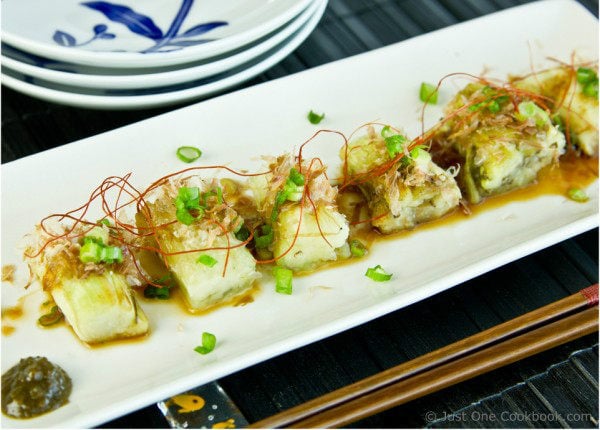
It’s Columbus Day in the US and I hope you are enjoying the long holiday weekend with your family and friends. Today I’m sharing a very easy Japanese eggplant dish called Yaki Nasu (it means Grilled Eggplant in Japanese). Part of the reason for sharing this recipe is because I received a lot of requests for eggplant recipes from readers. Grilled Eggplant is a simple and traditional Japanese eggplant recipe we enjoy at home.
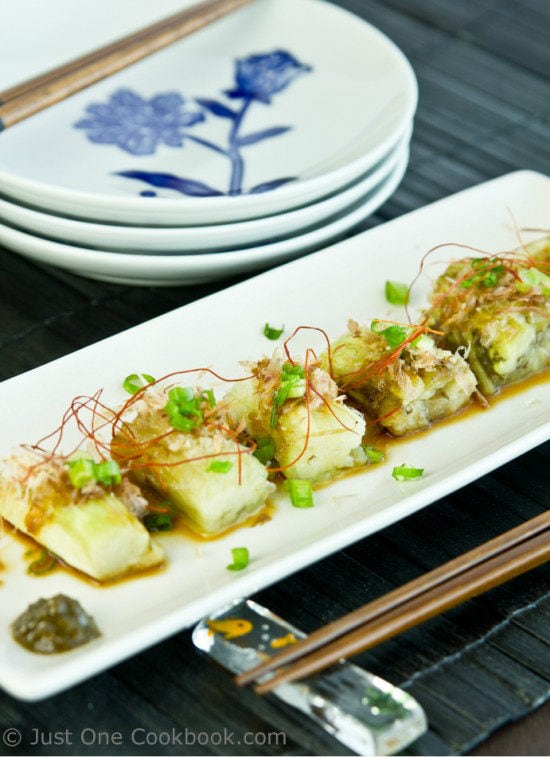
If you are familiar with Japanese cuisine, you are probably aware already that we place more emphasis on the natural flavor of the food instead of adding spices or seasonings. Japanese Grilled Eggplant is definitely one of the dishes that we enjoy the full flavor of the ingredient with just a little bit of seasoning. This recipe is very easy, but pay attention to the preparation part as it’s the key to keeping the eggplant juicy.
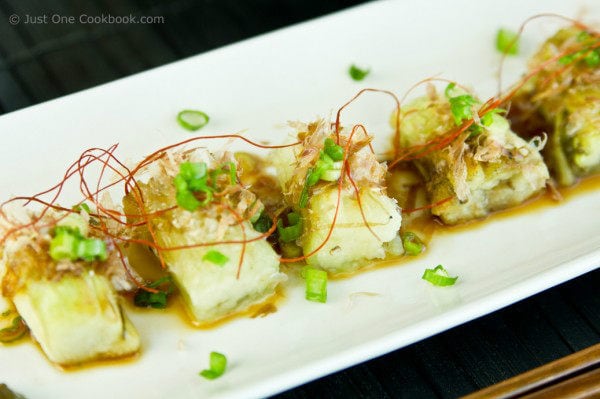
Wish to learn more about Japanese cooking? Sign up for our free newsletter to receive cooking tips & recipe updates! And stay in touch with me on Facebook, Pinterest, YouTube, and Instagram.
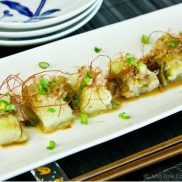
Japanese Grilled Eggplant (Yaki Nasu)
Ingredients
- 3 Japanese or Chinese eggplants (or 1½ Chinese long eggplants)
For the Toppings
- green onion/scallion (chopped)
- katsuobushi (dried bonito flakes) (skip for vegetarian)
- Korean chili thread (optional; I used mild chili threads)
For the 2 Sauce Options
- 1 Tbsp ponzu
- ¼ tsp yuzu kosho (Japanese citrus chili paste) (for the ponzu)
- 1 Tbsp soy sauce
- ¼ tsp grated ginger (for the soy sauce)
Instructions
- Soak 3 Japanese or Chinese eggplants in water for 15 minutes. Tip: I read in several Japanese recipes that soaking the eggplants in water prior to cooking helps them become fresh, like just harvested.
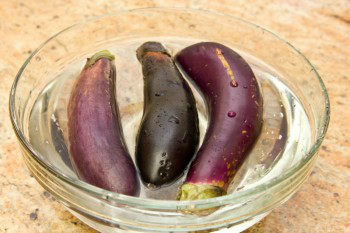
- Make a thin incision around the top of the eggplant and along with the eggplant lengthwise at 3 locations so that it’s easier to peel off the skin later (think peeling a banana).
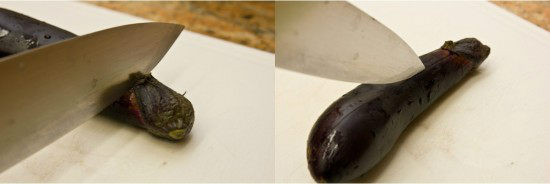
- Insert a chopstick or skewer to create a hole, which helps to evaporate moisture while cooking.
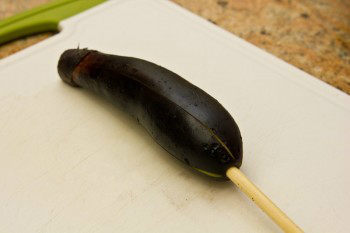
- Grill the eggplant on high heat over the wire rack. Do you see the steam coming off from eggplant? Grill until the skin gets completely burnt and the entire eggplant becomes wilted. Remove from the heat.

- Dip your fingers in iced water and start peeling the skin off. You can peel off the skin similar to a banana since there are several incisions already made. You have to peel it off quickly before the purple skin color transfers to the nice green eggplant color inside.
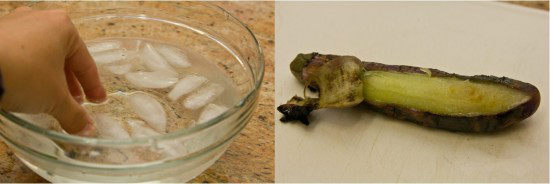
To Serve
- Cut into small pieces and serve on a plate.
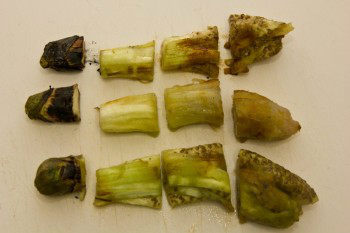
- Sprinkle katsuobushi (dried bonito flakes) and chopped green onion/scallion. I also top with some Korean chili thread. Serve with either ¼ tsp yuzu kosho (Japanese citrus chili paste) mixed into 1 Tbsp ponzu or ¼ tsp grated ginger mixed into 1 Tbsp soy sauce.
To Broil (optional)
- Set the oven broiler to High (550ºF/288ºC) for 3 minutes before cooking. After step 3 above, place the eggplant on a baking sheet and put in the middle rack of the oven, about 6 inches (15 cm) away from the heating element. Cook for 10–15 minutes, and then flip to cook the other side for 10 minutes, until the inside is tender and cooked through. Watch the eggplant carefully; if your oven is small/strong, try broiling at medium (500ºF/260ºC).
To Store
- You can keep the leftovers in an airtight container and store in the refrigerator for up to 2 days.
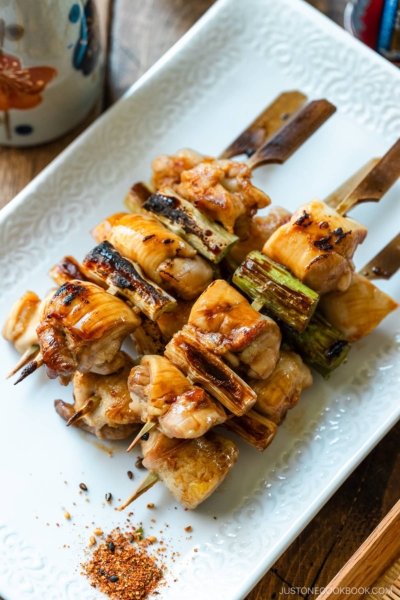
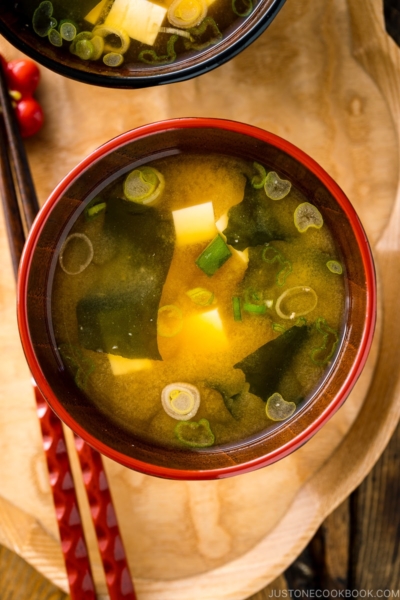
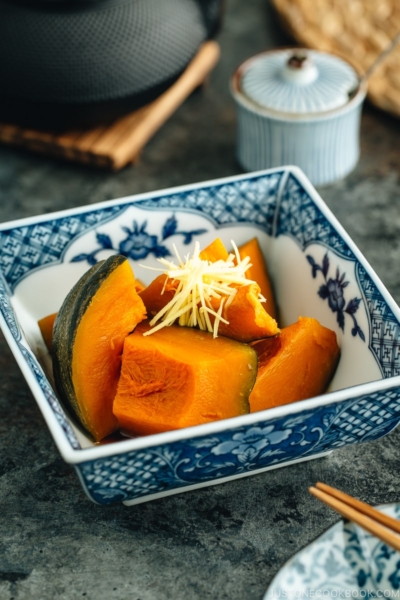
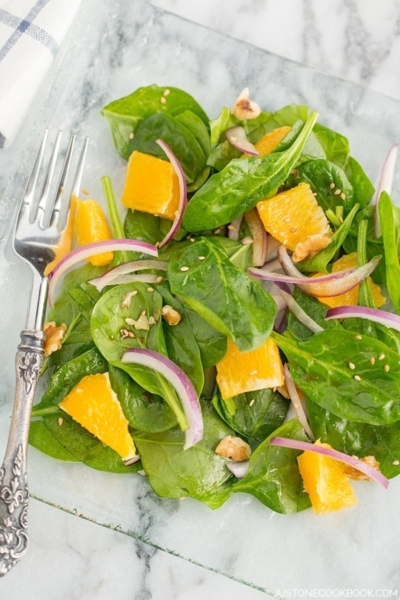




What’s the purpose of soaking the eggplant in the beginning?
Hi Kevin, Thank you for reading Nami’s post and trying her recipe!
Soaking the eggplants in water will help to plump them up.
We hope this helps!
I love eggplant but had never made this recipe because I thought it would not be ‘done’ enough. Boy was I wrong. Absolutely delicious! Melting, luscious and full of taste. This will be a go to recipe for sure
Hi Ina! We are so glad to hear that you gave it a try!
Thank you very much for trying Nami’s recipe and sharing your experience with us.
Happy Cooking!
I don’t have a mesh/wire rack. Could I cook this in the oven? Bake? Broil? What temperature and how long?
Hi Gina! I added the broil method in the recipe. Let me know how it goes!
Set the oven broiler to high (550 ºF/288 ºC) for 3 minutes before cooking. After step 3 above, place the eggplant on a baking sheet and put in the middle rack of the oven, about 6″ (15 cm) away from the heating element. Cook for 10-15 minutes, and then flip to cook the other side for 10 minutes, until the inside is tender and cooked through. Watch the eggplant carefully; if your oven is small/strong, try broiling at medium (500 ºF/260 ºC).
I burnt the eggplant. I guess some pieces fell off onto the burner and burnt? Should I take off the eggplant once I see steam coming off?
Thanks for the recipe.
Hi hmucha! You will need to burn the eggplant until the skin is all black like the picture above. You’ll be peeling it off. So your eggplant was broken off (as you mentioned some pieces fell off). Try to keep it in one shape, but burn the skin around. Maybe give some space from the heat source, which might help if your heat is too strong.
I made this for dinner this evening. It was fabulous. Loved the yuzu kosho.
Hi Debbie! Ohhh yuzu kosho is so delicious! I’m so happy that you could purchase it (I know it’s hard for majority of people) and enjoy this dish! 🙂 Thank you for your kind feedback. xoxo
I love grilled eggplant, it’s so simple. I like your grilling technique, will have to try it. My Mom makes a Vietnamese dish which is similar, she tops it with nuc cham (fish sauce) and lightly cooked green onions or fried onions in olive oil.
Oh Minh! Your mom’s grilled eggplant sounds wonderful! I’d love to try that next time I grill. Thanks for sharing! 🙂
What is the red stuff on top of the finished plate?
Hi Kristi! It’s called Ito Togarashi (red chili pepper threads) and I ask my mom to ship the package from Japan as I couldn’t find them in the Bay Area. It’s usually served as garnish and it’s not as spicy as chili peppers. 🙂
Hi Nami,
I made this tonight and it was so delicious with the ponzu and yuzu kosho! Even my not-too-fond-of-eggplant boyfriend enjoyed it. Thank you for sharing this lovely dish.
Hi Janice! Yay! I’m so happy you tried this recipe and liked it. Even your BF! Thanks for letting me know. 🙂
Hi, Nami, is there a photo to show what the Ponzu Sauce and Yuzu Kosho bottles (?) would look like? Thanks again for a great recipe!
Sharon, check my Pantry page. :-). Thanks!
https://www.justonecookbook.com/pantry/
Hi Nami,
I love Japanese food like crazy but have really hard time finding it vegetarian……I would love to try this recipe….can you please suggest a really authentic substitute for bonito flakes. So happy to find your awesome blog….and kudos on this lovely dish!
Hi Neelima! Thank you for stopping by and leaving the comment. Actually you do not need bonito flakes – they give nice flavor and aroma, but it is not necessary.
You can convert non-vegetarian dishes into vegetarian fairly easily. We use dashi stock for our cooking and the stock usually consists of kombu and bonioto flakes, or anchovies. So when you make dashi stock, you have to make one with kombu only. See my how to page for instruction. Just remember not to include bonito flakes. We use kombu dashi for certain kinds of dishes, but in your case you have to use it for all the dishes.
Other than that, you can use vegetables or tofu to replace meat/seafood you see in the recipe. Traditionally we eat more vegetables than meat. We eat more fish than meat, too, or maybe equal amount nowadays. A lot of people focus on simple food. For example, our typical dinner include rice, miso soup, 2-3 vegetable side dishes, and one small portion of fish or meat. Really well balanced. I often feature Japanese dishes that are popular in the US or worldwide and they might be not vegetarian, but I will be sharing a lot of vegetable dishes as well in the future. I hope you enjoy my blog and thanks for following!